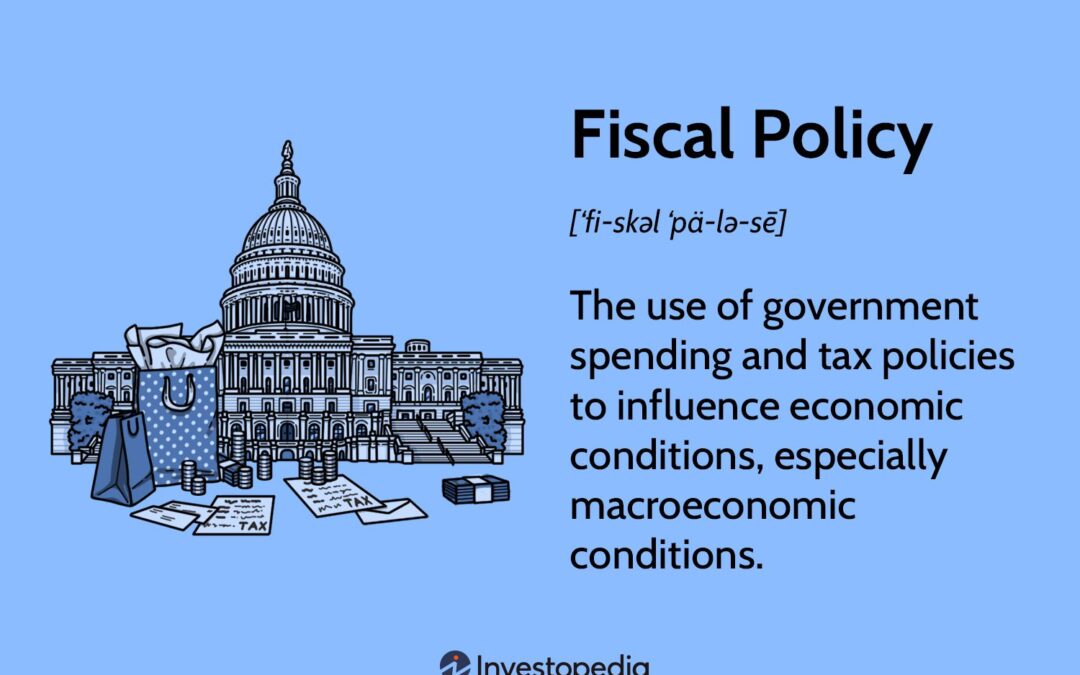National governments are always under public pressure during tough economic times. People become agitated when the economy is not good, and if they wish to remain in power, governments must try to improve economic conditions and then keep the restored economy stable. To do so, those governments use their spending and taxation powers to affect economic conditions. This is called fiscal policy.
The Origins of Fiscal Policy
Modern fiscal policy operates using the theories of British economist John Maynard Keynes. Keynes developed his ideas in response to the Great Depression. Traditional economic theories held that the market was self-correcting and that any fluctuations would be temporary. Keynes disagreed with this notion. He felt that the government could use its powers to control the ups and downs of the market, allowing for a more stable economic situation.
Keynes’ objections to the idea of self-correcting markets were driven by the psychological factors of consumers and business leaders. Keynes believed that emotions drove much economic activity. The Great Depression’s origins convinced Keynes that fear could quickly lead to a major downturn in the economy, while overconfidence during good times tended to lead to overspending and inflation. The cornerstone of Keynes’ ideas is that the government can use its powers of taxation and public spending in a more rational fashion to keep the economy from swinging too far for too long one way or the other. This is based upon the idea of controlling aggregate demand, i.e., the total amount of money generated by consumers purchasing goods or services in a particular economy.
The Two Types of Fiscal Policy
There are two general types of fiscal policy that governments can employ to correct market swings: expansionary and contractionary. Each is used for a different economic condition.
Expansionary fiscal policy is employed when the economy is in a downturn or recession. The goals are to reduce unemployment and ensure that consumers have more money to spend on goods and services.
Lowering taxes gives consumers more money in their pockets to spend. This leads to greater aggregate demand, and as businesses sell more goods or provide more services, they must hire additional workers to meet the demand. This, in turn, leads to lower unemployment and more employed people spending more money, further increasing aggregate demand. Increasing government spending can also help fuel growth. Government initiatives such as infrastructure projects or increased arms production employ more people and thus generate more consumers with more money to spend.
However, more government spending and less taxation lead to deficit spending. This can become a problem later on and can lead to very unpopular government austerity measures. Taking on increasing levels of debt can also limit future economic flexibility.
Contractionary fiscal policy, the second type of fiscal measure, involves slowing down burgeoning economic growth to prevent some of its byproducts such as rising inflation. In implementing this policy, the government raises taxes and reduces its public spending. Taxation increases slow down purchases and reduce aggregate demand, bringing prices down. Less public spending means less overall employment and thus fewer consumers overall, once again affecting aggregate demand adversely.
With higher taxes and lower government spending, contractionary fiscal policy creates budget surpluses. It does come with a major drawback, however. Higher taxes and less government spending are extremely unpopular among the public, making the use of contractionary fiscal policy a politically risky proposition.
The responsibility for setting and implementing fiscal policy depends upon the particular type of government. In the United States, the power is shared by the executive and legislative branches. The president and the secretary of the treasury tend to have the most influence, usually supported by a Council of Economic Advisers. Together, they decide upon a fiscal policy, but Congress has the final say, as it is responsible for authorizing taxes and appropriations. In a divided government, this can lead to either healthy debate or an outright impasse.
The idea of government involvement in economic affairs is still controversial. Proponents of government intervention say that only the power and rational judgment of government experts can keep markets from becoming unbalanced and leading to economic problems. Opponents of intervention argue that the government has no business in business and that government actions can favor one group over others. Historically, in the United States, governments have had a more or less direct influence on the economy based on the political philosophies of the particular party in control. Examples can be found to support both sides of the argument, ensuring that the debate will continue well into the future.

